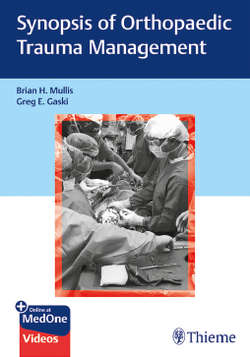Читать книгу Synopsis of Orthopaedic Trauma Management - Brian H. Mullis - Страница 81
VI. Diagnosis
ОглавлениеA. Dual-energy X-ray absorptiometry (standard of care)
1. Two X-ray beams of different energy are passed through tissue.
2. The two energy peaks correspond to soft tissue and bone, thus the absorption of bone in the absence of soft tissue can be calculated.
3. Measured in the lumbar spine (composite score from L2–L4), hip, radius, calcaneus, and whole body.
4. Generates three data points:
a. Bone mineral density (BMD)—expressed as volumetric BMD in g/cm3 or areal BMD in g/cm2.
b. T-score—comparison of measured BMD to normal, young (age 30), same sex controls (US uses same ethnicity; WHO uses white female reference).
i Used in postmenopausal females and males aged > 50 years.
ii. Score reported as an integer representing the number of standard deviations from the young, normal, control value.
c. Z-score—comparison of measured BMD to patients of similar age.
i. Used in premenopausal females and males aged < 50 years.
5. Weaknesses:
a. No normalized data for races other than Caucasian.
b. Not weight adjusted.
c. Bone architecture not considered.
d. Bone turnover not measured.
e. Can be influenced by osteoarthritic changes in the spine and hip, which are common in the elderly population.
f. Error rate up to 20%.
B. Quantitative computed tomography (QCT)
1. Special type of CT scan using routine phantom calibration. It allows volumetric assessment of BMD (g/cm3) which can be converted to areal BMD (g/cm2) and separation of cortical from trabecular bone. The g/cm2 values generated with this modality have been shown to be predictive of fragility fracture and have been incorporated into the FRAX calculator.
2. Disadvantages of this modality include limited availability of the software and variations of measurement from machines of different manufacturers.
C. Diagnostic CT (i.e., routine CT scans)
1. Automated exposure control adjusts the tube current based on the attenuation of the signal after passage through the body. Results in uniform measurements of signal attenuation without the use of phantom calibration.
2. Expressed in Hounsfield Units (HU), which is a coefficient of attenuation measured on a scale in which air is measured as 1000 HU and water as 0 HU.
3. Currently under investigation as an opportunistic screening tool in the diagnosis of osteoporosis as over 80 million CT scans are performed annually in the United States for reasons unrelated to osteoporosis.
D. World health organization (WHO) criteria for diagnosis of osteoporosis
1. Normal: T-score over −1.0.
2. Osteopenia (low bone mass): T-score between −1.0 and −2.5.
3. Osteoporosis: T-score below −2.5.
4. Severe osteoporosis: T-score below −2.5 with a history of a fragility fracture.
5. Additional criteria for diagnosis of osteoporosis
a. Radiographs—routinely ordered to investigate suspected fragility fracture. At least 30% BMD must be lost before osteopenia is evident on radiographs.
b. MRI scan indicated to evaluate for nondisplaced femoral neck fractures and sacral insufficiency fractures.
c. Routine laboratory analysis:
i. Low 25 hydroxycholecalciferol D level.
ii. Normal or low serum calcium level:
d. Additional markers of bone resorption include:
i. Collagen telopeptide (collagen degradation).
ii. Tartrate-resistant acid phosphatase (osteoclast numbers).
e. Markers of bone formation include:
i. Alkaline phosphatase (osteoblast numbers).
ii. Osteocalcin (osteoblast numbers).
iii. Collagen propeptides (type 1 collagen synthesis).
